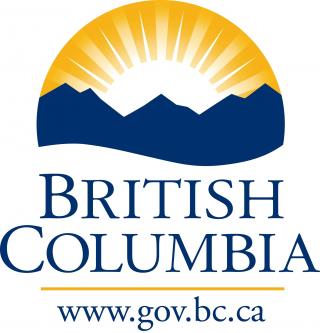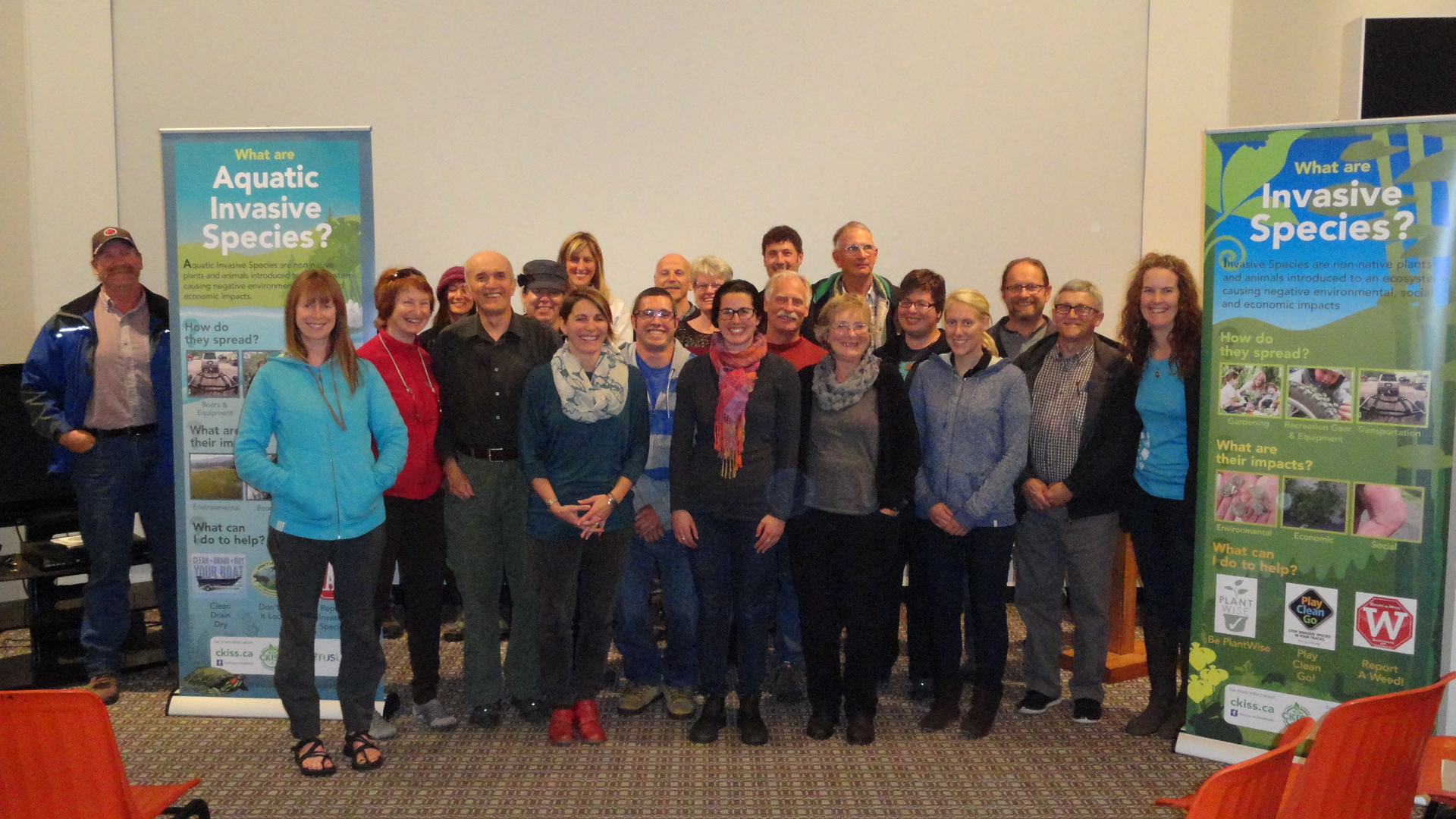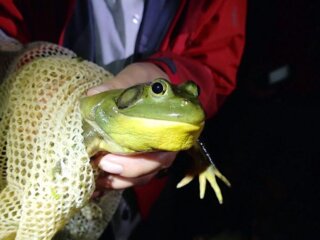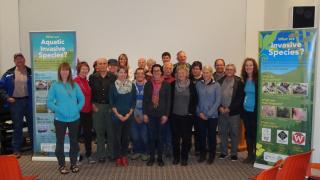The Salmo-Creson is a legendary mountain pass in the Kootenays. As travellers drop down from the top and head east the first billboard spotted is encouraging you to turn right and visit the Interpretive Centre for the Creston Valley Wildlife Management Area (CVWMA). The beautiful marshland has been deemed a wetland of international importance, and a globally significant bird area. The CVWMA is the epitome, of biodiversity; with close to 400 different wildlife species calling the area home. This was the venue for the Central Kootenay Invasive Species Society’s (CKISS) annual general meeting that took place on September 16th, 2015. Other AGMs have a boardroom feel, this is not the case for CKISS who combine their AGM with a field tour that allows board members, city councilors, CKISS members and concerned citizens to get close and personal with the natural world.
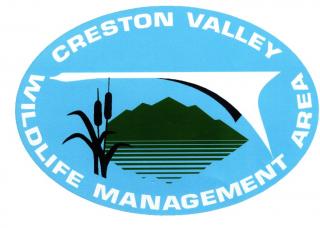 The day kicked off with a Drone demo from Nelson based company Harrier Aerial Surveys. Drones are quickly emerging as a valuable tool used in ecological research. In Spring 2015 drones were used to map the problematic swath of Yellow Flag Iris (YFI) that hugs waterways at CVWMA. The flower is an escaped garden ornamental that outcompetes and displaces native plants causing wildlife habitat degradation.
The day kicked off with a Drone demo from Nelson based company Harrier Aerial Surveys. Drones are quickly emerging as a valuable tool used in ecological research. In Spring 2015 drones were used to map the problematic swath of Yellow Flag Iris (YFI) that hugs waterways at CVWMA. The flower is an escaped garden ornamental that outcompetes and displaces native plants causing wildlife habitat degradation. 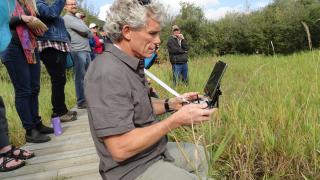
Thompson River University (TRU) in Kamloops is currently conducting research on control methods for Yellow Flag Iris. The University is researching the efficacy of thick rubber matting (benthic membrane) as a control method for YFI. Participants got to see first hand several research plots that exist through out the wetland area. This past spring and summer CKISS has been taking samples from these plots and sending to TRU to be studied. Through modern technology Catherine Tarasoff , PH.D, P.Ag a Adjunct Professor in the Department of Natural Resources at TRU was able to Skype into the event and offer insight into her research. 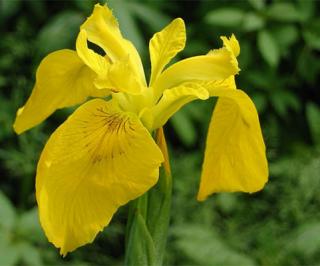
Marc-Andre Beaucher, Head of Operations for CVWMA gave a presentation on the threats that American Bullfrogs can have to wetland biodiversity. He stressed that early detection and rapid eradication is imperative because bullfrog outcompete BC’s native species like the endangered northern leopard frog.
“A female bullfrog can lay up to 20,000 eggs vs 3-5,000 for a female leopard frog – bullfrog can easily “overrun” the system and they are also very voracious, they’ll eat just about anything that fits in their mouths.” – States Marc-Andre Beaucher
It is well known by wildlife officials that Bullfrogs run rampant in Idaho and Washington. A bullfrog surveillance program was set up this past summer to investigate if any of these pesky critters had made their way to the Kootenays.
“As part on an early detection rapid response surveillance system acoustic equipment was set up in several locations along the border. While one meter was being installed recently bullfrog calls were heard. Visual sightings confirmed that the species were here for the first time in the west Kootenay”. – States Ministry of Forest Lands Natural Resources Operations, Habitat Officer Terry Anderson
The final presenter of the day was Leigh Anne Isaac PH.D., a senior biologist with VAST Resources Solutions who has been studying the Western Painted Turtles that reside at CVWMA. The Western Painted Turtle is the only native pond turtle left in B.C., however their numbers are rapidly decreasing due to habitat loss and now considered a species of concern in the Kootenays. CKISS has worked with VAST to remove invasive plants in order to restore sensitive turtle nesting habitat. 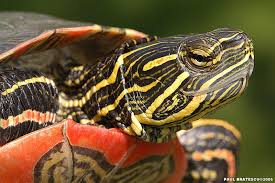
During the AGM a new member was elected to the board, Nelson resident Malcolm Fitz-Earle Ph.D.
“My interest in environmental issues and human population goes back more than 45 years. I have taught ecology, and invasive species are second only to habitat loss for the reduction of biodiversity. As a director of CKISS I will learn more about invasive species and I hope to contribute to their control. I am impressed by the youth and enthusiasm of the members of the board and the executive.” – States Malcolm Fitz Earle when asked what sparked his interest in becoming a CKISS board member.
The fully- catered event is open to the public every year and all are welcome to attend CKISS’ field tour and AGM to learn more about invasive species, their impacts and how to make a difference. To sign up to our mailing list and be the first to get an invite to CKISS events click here.
This event was made possible with funding from :


